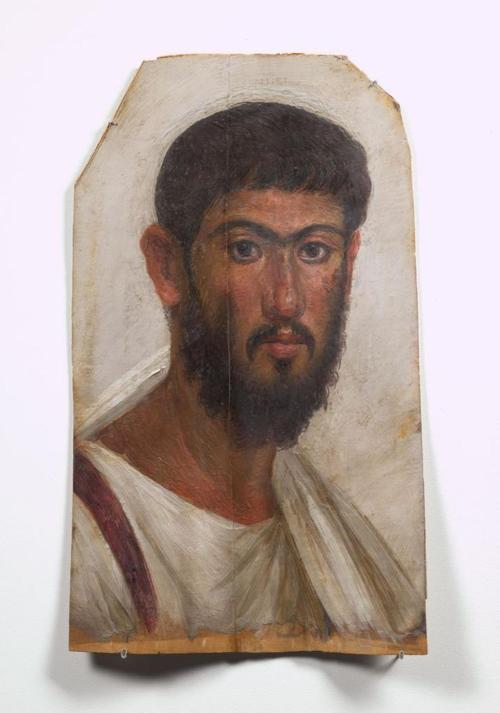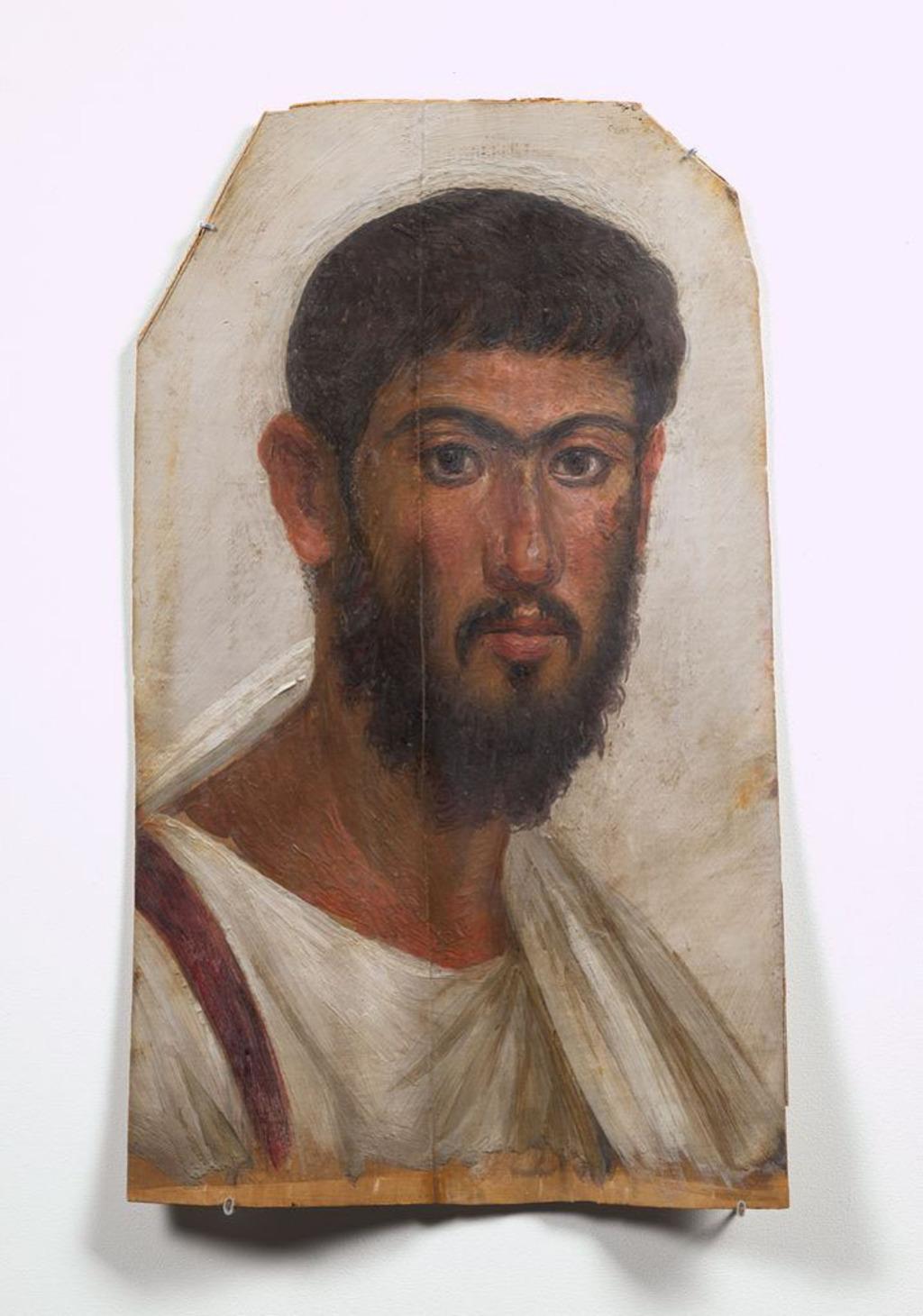
Mummy Portrait of a Man
Created using hot wax and pigments on a wood panel, a technique known as encaustic painting, this is a portrait of a mature man who may have been in his 30s. Like in other Roman funerary portraits, the figure is depicted with angled shoulders and a frontal face. The man’s dark hair is combed neatly over his forehead, and his mustache and beard are curly. White highlights were added to the brow, eyes, nose, and upper lip, emphasizing the three-dimensionality of the image. The vertical purple band on his toga suggests he was an official. The clipped top corners and the lack of paint at the bottom are the result of how the wooden panel was inserted into the mummy wrappings in place of a funerary mask.
Scientific analysis of the materials places the creation of this funerary portrait between 150–200 CE. The date is narrowed further by stylistic features: the hairstyle and beard are typical of the Antonine period (138–192 CE). Scholar Klaus Parlasca, who published the corpus of all known Roman mummy portraits, suggested a more specific date of around 170/180 CE, during the reign of Marcus Aurelius (161–180 CE).
This mummy portrait is most likely from Al Fayyum, a basin in Egypt known for caches of well-preserved mummies that were found in the 19th and early 20th centuries. The early discovery of these works means they often lack archaeological details or information about the accompanying mummy. There are multiple theories as to when the portraits were painted: possibly during the lifetime of the individual (and displayed in the home prior to their use at burial) or after their death. Studies of the portraits still with their mummies suggest that they represent the relative age of the deceased.
- Nice. Luc Tuymans

